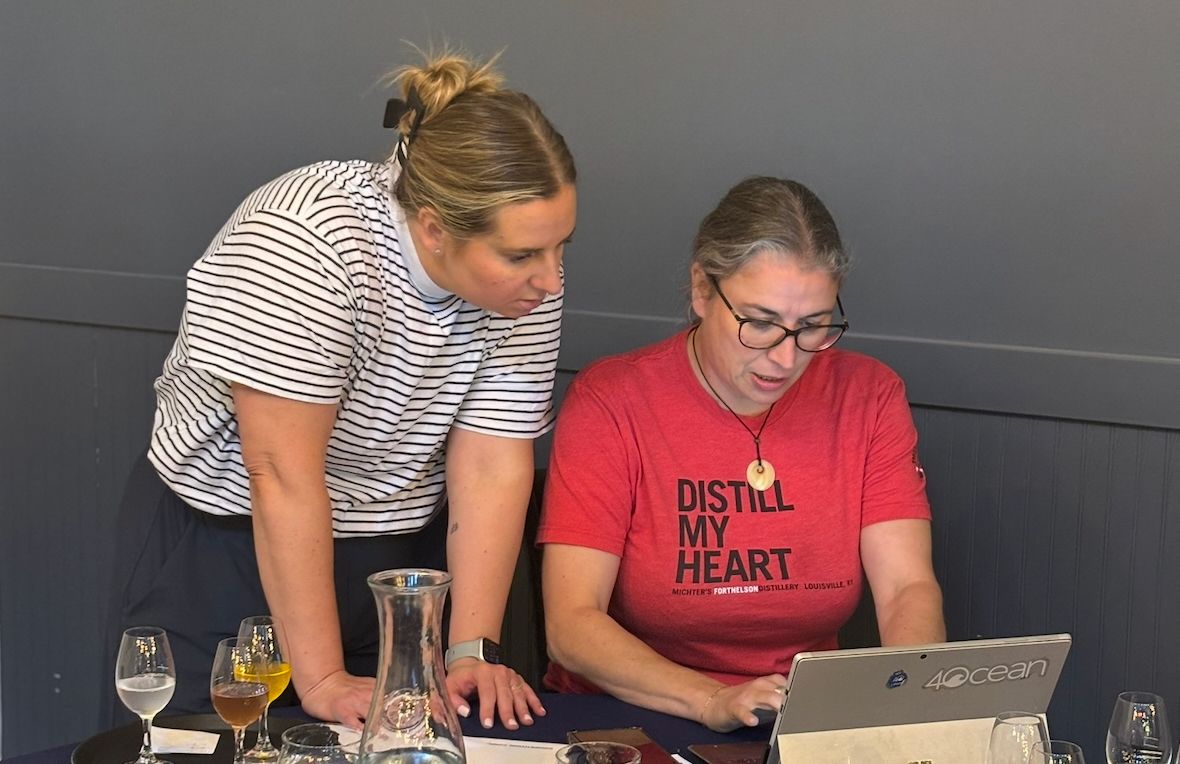As a journalist Amanda Barnes is used to writing for her living. But this is the first time she has ever attempted something of this scale – a book, a guide, and a tribute to the wines, the people and the communities of South America.
Before we go into your new book can you explain your fascination with wines from South America and how that has developed over the years?
I was born and raised in Hampshire, but my mother is from the US and both my parents always loved to travel, so I guess travel fascinated me from a young age. When I studied Literature at King’s in London I focused on Latin American literature, and I always blame Borges and García Márquez for making me fall in love with a continent from afar.
I had never been to South America, but in 2009, after a couple more years finishing my Masters in journalism and working in the local rag, I moved there – seeking adventure, magical realism and hoping to learn about wine from the ground, or vineyard roots, up.
You were based in South America for many years – was that important to really understand what is happening there and the winemaking communities?

Mendoza in Argentina has been Amanda Barnes main home during her time living in South America. Photograph by Stephane Rampon
I would still be based there if the pandemic hadn’t firmly shut international borders. I was only supposed to be back visiting in England for a few weeks in March 2020.
I’ve been living in Mendoza since 2009 and my experience living there has been fundamental to my understanding of the wine regions and culture too. Since 2011, I also made monthly trips to Chile (and also lived there for a year in the middle) which has also given me a deeper understanding of Chilean wine too. It’s a very different experience when you live in a wine region, compared to when you visit it as a journalist. There are no frills or fanfares, instead you live as part of the wine community -experiencing the ups and downs, and getting to witness what is really happening on the ground.
It’s been a thrilling decade when I look back at it. So much has changed in relatively such short time, and yet the quintessential South American spirit is still very much the same.
What would you say have been the biggest and most influential changes in South American wine sector in the time you have been covering it?
There are, of course, trends which have come in and gone out, the same as in every wine region, and specifically we are seeing now lighter oak regimes, more attention to the vineyard and a new leaning towards elegance over power. But I would say the most influential change has been the experience of winemakers travelling for themselves.
In the 90s it was all about the international flying winemakers coming in and making changes to the industry, but since 2010 I think some of the biggest changes implemented (even if they are slight) has been as a result of South American winemakers learning from their experiences abroad and fine-tuning their own winemaking and viticulture techniques with both acquired knowledge from new experiences and inherited knowledge of their own land and varieties.
It is a really exciting time in South American wine as the wines are really beginning to show a new maturity in understanding and expertise, while still embracing that adventurous and innovative South American spirit.
Has that been across all the major wine producing countries or are there any specifically leading the way?
The leaders are always going to be Argentina and Chile, in both volume of production and quality. But Uruguay is a wine country I am particularly fond of with some fantastic quality wines and a rich wine culture. And Brazil, Bolivia and Peru (although they are still leagues behind the other three overall) have made great leaps in quality in recent years. They are definitely worth keeping your eye on.
Tell us about your new book and how that came about?
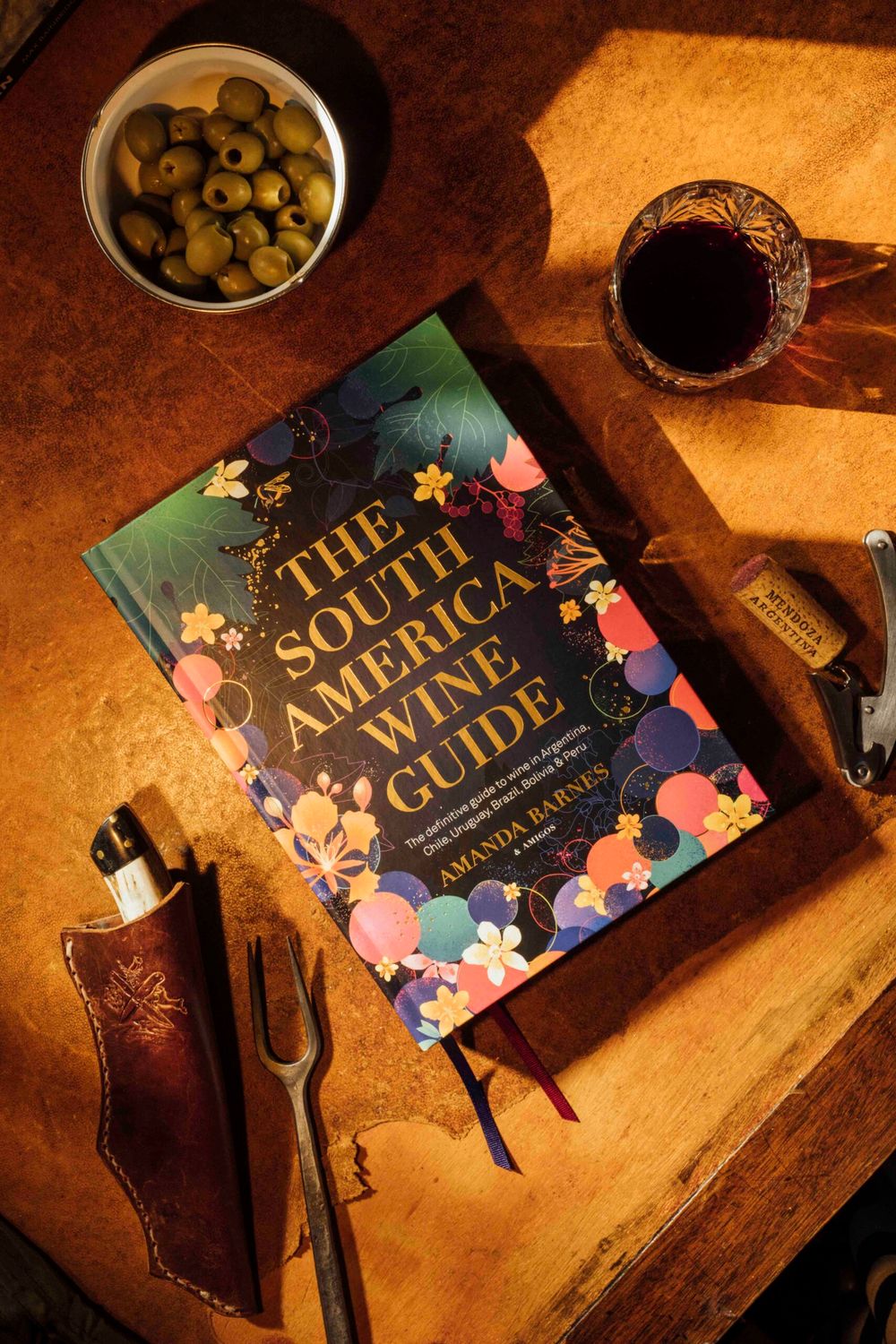
Amanda Barnes pride and joy and her tribute to the wines of South America. Picture by Greg Funnell
The South America Wine Guide really is the culmination of my decade or so living there and is the sort of book I would have loved to have had when I arrived. It’s a guide that really digs deep into the wine regions of South America – both the well known ones and those that are off the beaten path – but also offers an insight into the culture, history and what’s on the horizon in the future for these wine regions. It includes perspectives from some key winemakers and agronomists; my curated Terroir Selection lists with the best wines that represent each region; and hundreds of photos and dozens of in-depth regional maps.
How did you decide how to present the information and set the book out?
There are certain sections I knew I should include in a wine book – grape varieties, history, wine regions – and then there are others which evolved as I was writing them. I knew I wanted it to be a visual journey as well as a literary one.
There are also key topics I felt hadn’t really been written about or detailed enough in South American wine and so I wanted to focus on those too. Criolla varieties, for example, is a key chapter in the introduction of this book (including a Criolla family tree) and these wines and vines reappear regularly throughout the book. They account for around a quarter of all the wine grapes in South America and regularly appear as everyday wines on the table there, and yet still rarely get a mention in both local or international press. I hope the guide gives a balanced panorama of the wine world of South America.
How did you find the whole experience – do you feel you know the industry even better having written the book?
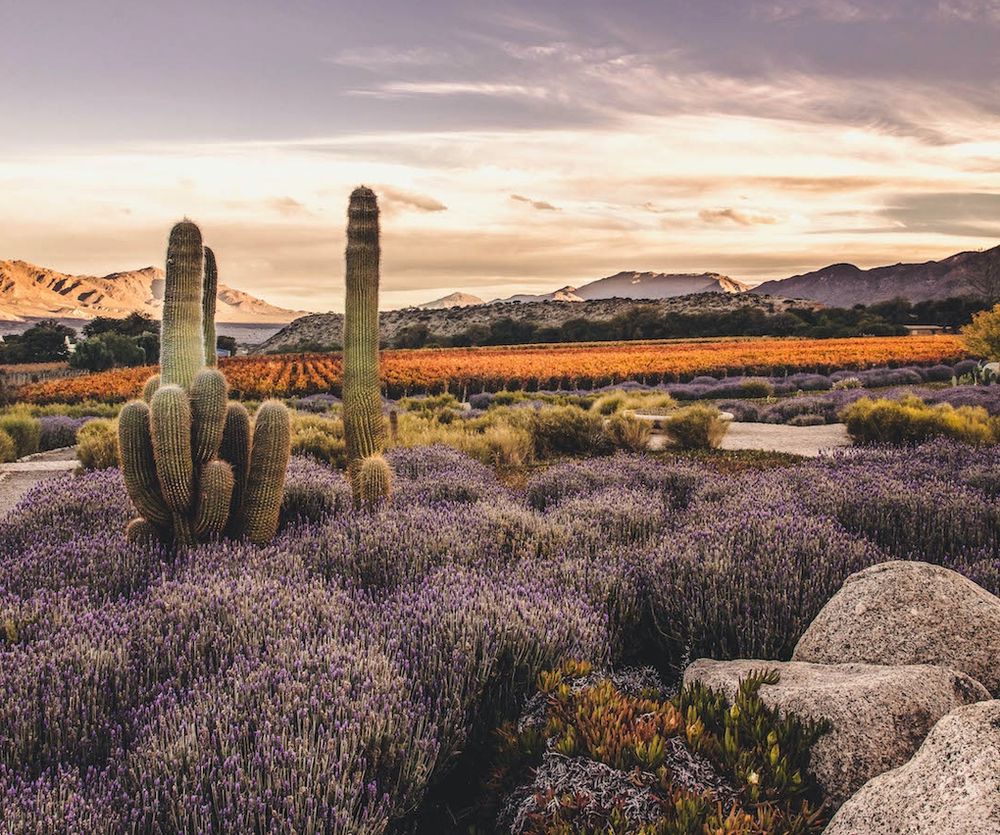
The book has given Amanda Barnes the chance to share her memories and experiences but also tell the story of key wine areas such as Chile’s Calchaqui valley. Picture by Stephane Rampon
I’m not going to lie, the experience of writing and self publishing a book is a rollercoaster. Especially with all the fireworks and spanners the pandemic threw in the way. The wonderful thing though has been working with and consulting with so many people on this book. The reason the cover says ‘By Amanda Barnes & Amigos’ is because I don’t underestimate the village it has taken to develop this book. From the help of researchers, winemakers and agronomists in countless interviews, to my sub-editor and friends giving their opinion on texts, to my photographers hunting through their catalogues for the perfect photo.
I haven’t got to know ‘the industry’ any better from writing this book, but I have come to appreciate many more people within it and count them now, more than ever, as great amigos (friends).
The book also shows your own passion and feelings for the countries and regions – was that important to you rather than it being a straight education book on wine?
Of course. I think wine is emotional and filled with passion. And I think education should be too. There’s plenty of technical detail in the book, but I hope it isn’t too dry a read. I think most of us who work in wine, whether we are writers, sommeliers or teachers, are passionate about it and the places and people that make it fill us with feeling. The book I hope reflects that.
You also cover less known wine countries like Peru and Bolivia. Did you know those countries before and how well do you think they are doing in terms of winemaking and progress of their wines?
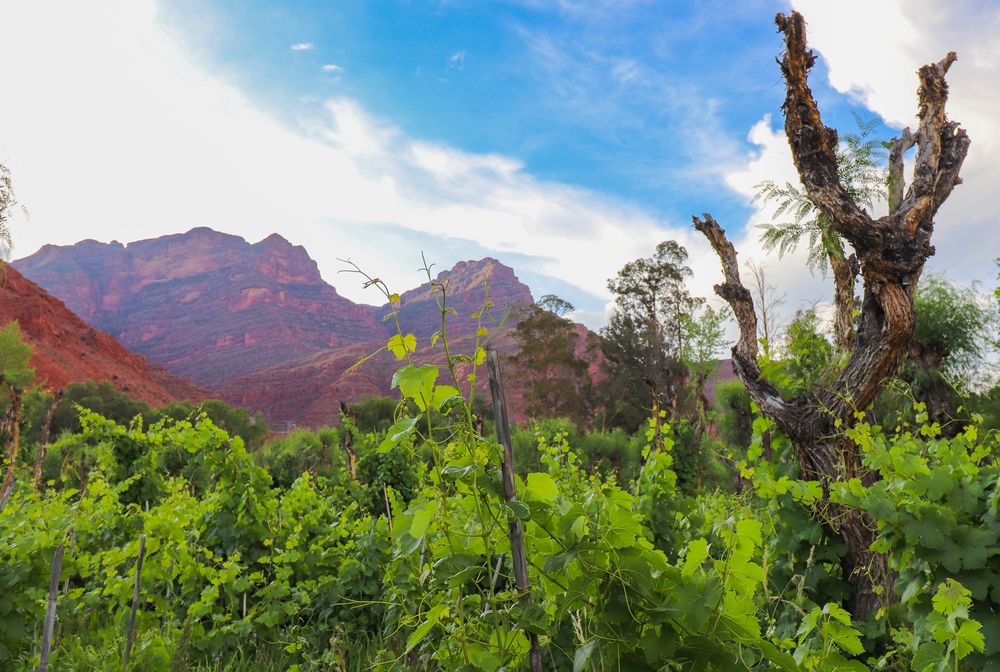
The vineyard Cepa de Oro Cinti Valley in Bolivia as featured in the guide
I first went to the wine regions of Peru and Bolivia in 2016 and have been going back ever since and seen great changes in the quality and winemaking ethos in that time alone. Wine production in Peru and Bolivia is undoubtedly a greater challenge, both in terms of the climate and the economic climate. So naturally they are behind the titans of Argentina and Chile, and I can’t see that ever changing. But there are some real gems to discover in each, you just need the patience and adventurous spirit to go there.
For me the most exciting thing happening by far is the Criolla renaissance, and you get some incredible old vines in both countries which can produce characterful wines when made in the right hands. Bolivia is a diamond in the rough which has some really interesting high-altitude terroirs and great wines being made already. It is a country that is poised for better recognition and needs some adventurous importers willing to give it a chance (and be prepared for the sometimes tedious paperwork).
Peru is still finding its feet in my opinion, but the wine quality is steadily improving and I think it is partially led by the incredible gastronomy scene there with Lima’s top sommeliers, wine bars and restaurants actively working with local growers and winemakers to make increasingly engaging wines.
How did you coordinate working with so many regional specialists and what sort of people were they?
I’m a freelance journalist, so I’m always working alone and yet with hundreds of people. It’s no mean feat, but it is interesting. I interviewed hundreds of winemakers, agronomists, growers, researchers and technicians while writing the chapters; and had many of them on speed dial while developing the maps with my cartographer, for many of which we literally drew on vineyards in these regions that have never been mapped out in detail before. Fortunately I’ve been living there and working with these specialists for several years, so I have most of them on Whatsapp and they are well accustomed to my annoying messages at midnight.
It also includes maps of wine regions that have not been done before – how did you go about doing that and what help did you bring in?
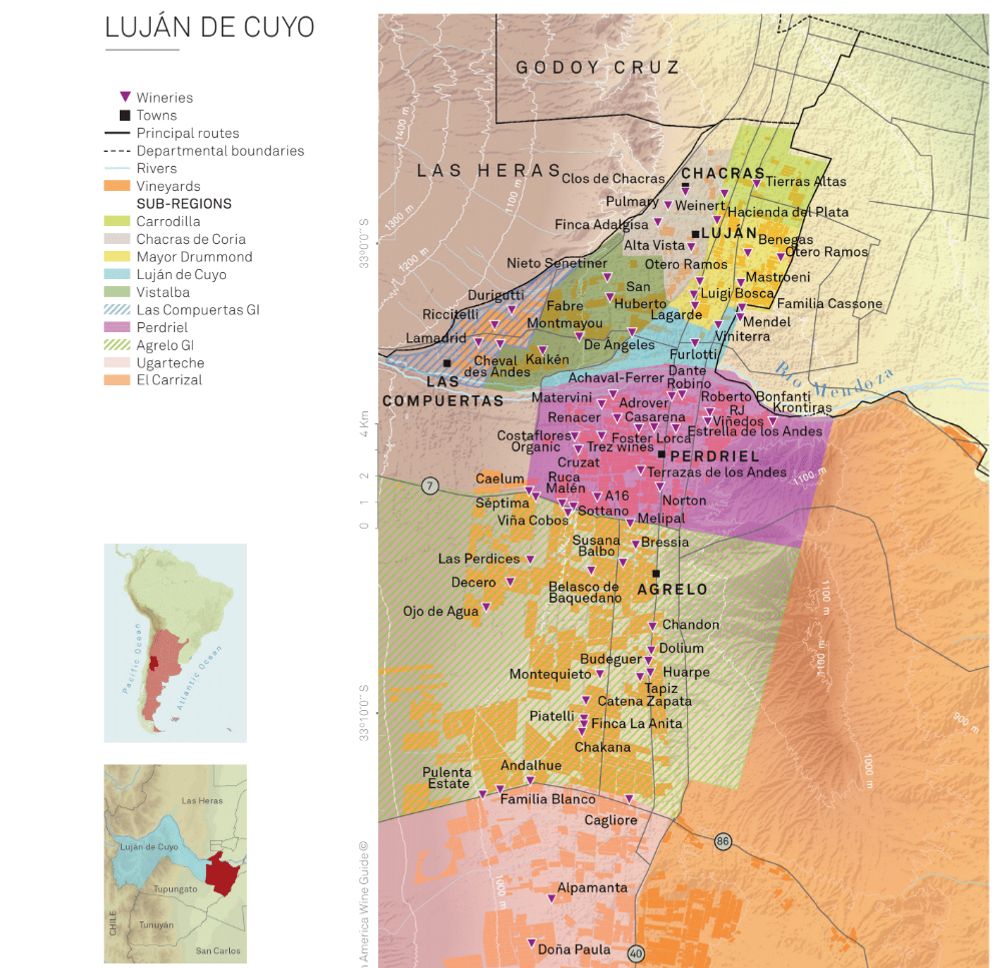
The guide also includes detailed maps of the main wine producing regions, many of which are the first of their kind to be published
The maps were a great challenge but one that I really wanted to focus on in order to provide what I hope is a useful tool for the industry to use in the future. I hired a local cartographer in Mendoza (I was very keen to keep my hired team freelance and local) and with her we gathered sources and databases, cross referenced, and eventually sent out maps to winemakers and agronomists to help pinpoint their own vineyards and sub-regions. It was a very artisanal job and one that took a long time to finish! I hope that they offer a useful tool for the industry and readers alike.
Who did you write the book for – who is your target audience?
My target audience is anyone that loves wine and wants to learn more about South America. There’s plenty in there for the novice, but also great detail that I’m sure Masters of Wine and Master Sommeliers will appreciate. It is a deep dive into the wines of South America, but I hope approachable enough that anyone can take a dip!
What sort of tone of voice were you looking for?
My own? I hadn’t really thought about that before. Maybe I’ll have a think about my tone and be able to answer that for the second edition. It is also very much a travel book as well.
How did you balance the travel and wine content?

84 year old Geraldo checks the Carignan grapes in Itata in Chile. His father planted these vines over 100 years ago. Picture by Matt Wilson.
For me, wine is travel. Whether you are travelling in a glass, or literally going to the vineyard and wine region yourself, everyone travels through the experience of wine. And so including travel writing was always going to be a key part of the guide. I’ve included some travel guides (with tips on how to travel there, what to eat, where to visit etc) but also tried to paint a picture of actually being in the region too. Fortunately the fabulous photography of Matt Wilson, Stéphane Rampon and Greg Funnell does that quite convincingly too.
What do you hope it can do for the South American wine industry?
I hope it gives a solid base of information, detail and colour from which the industry can build their own storytelling of their wines and regions. I’ve been writing about South American wine for magazines and other books for several years and our ‘South American quota’ is distressingly small sometimes. So I hope the guide helps raise awareness that South America is a big and beautiful wine continent with so many wines, producers and regions that are worthy of attention and delightful to discover. Mostly I hope that it encourages more consumers to have the confidence to explore further into the unique regions, varieties and stories of South American wine.
Will you be looking to update it in the years to come?
Definitely. My plan is to republish a new edition of The South America Wine Guide every two to three years, with an update and fresh content. I’m also planning to host special tasting events and masterclasses in the interim.
What next for you in terms of writing and consulting?
I’m working on the MW, so that’s taking up a chunk of time. And I continue writing regularly for other magazines and books, which keeps me entertained and watered.
Closely on the horizon is a special tasting of wines from Itata in Chile for importers here in the UK in October, so if anyone wants to discover small and interesting producers in Itata please do get in touch.
Are you looking to return to South America when you can after Covid?
Absolutamente! I can’t wait to spend some quality time with my cat, and my friends too of course. I can almost smell the first asado already.
But on a more serious note, the pandemic has been very tough for everyone, but it has been especially tough in South America. And so I hope that the wine industry and consumers here can help support producers in South America by buying their wines, sharing it on social media and sending some encouragement and support from afar. Hopefully in the next few months the situation will have improved everywhere and I hope that anyone with itchy feet after this long year of lockdown will put South America on the top of their bucket list.
I can promise it is one of the most fascinating and memorable continents to discover. I hope to see you there.
- You can find our more and buy a copy of the book at this link: https://southamericawineguide.com/book/
- The South America Wine Guide website also acts as a focal point for stories, debates and the latest news about South American wines which is available here.

